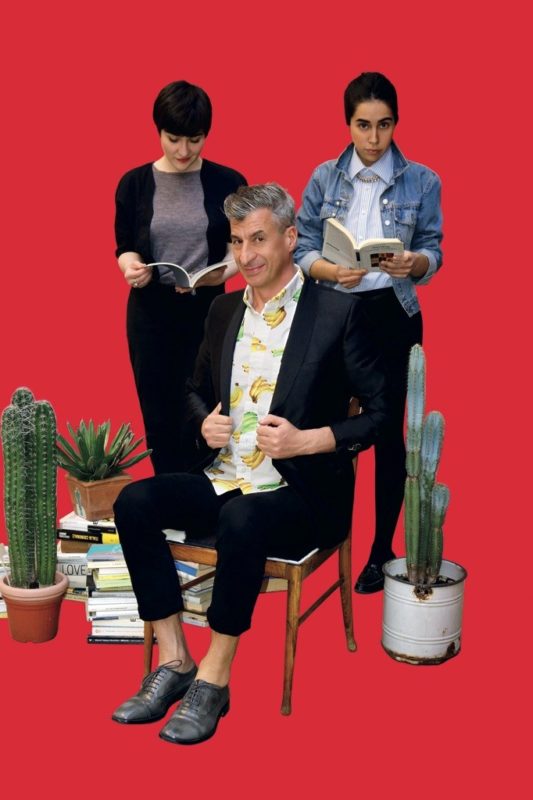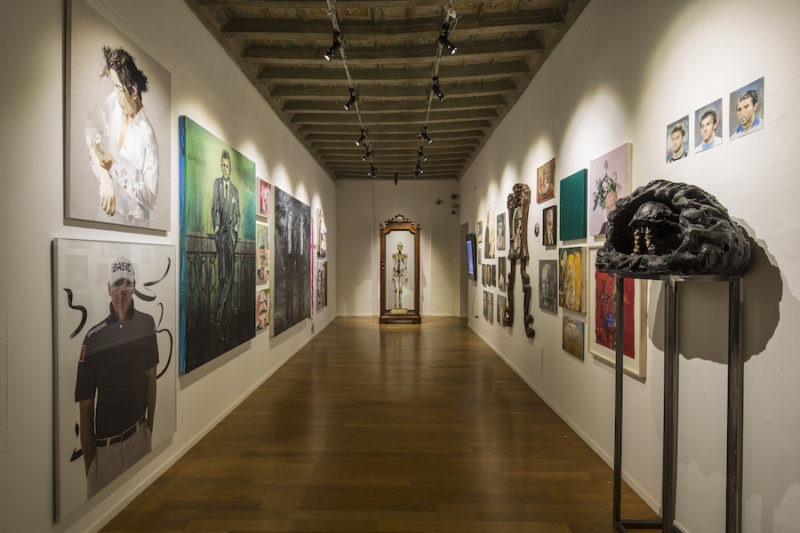5.11 — 11.1 15
5.11 — 11.1 15
Palazzo Cavour
Torino, Italy
An exhibition produced by Artissima
Curated by Maurizio Cattelan, Myriam Ben Salah and Marta Papini
Artissima Director Sarah Cosulich Canarutto invited “retired” artist Maurizio Cattelan to curate the show. He accepted the challenge—trying his hand at the exercise for the second time since the 4th Berlin Biennial in 2006 that he organized with Massimiliano Gioni and Ali Subotnick—and formed a team involving two young curators: Palais de Tokyo’s Myriam Ben Salah and longtime collaborator Marta Papini.
SHIT AND DIE has a strong title. Yes, it is a provocation, as every statement dealing with “taboo” subjects might be. But it is not only a provocation. It is also a loan from an artwork: One Hundred Live and Die (1984), by Bruce Nauman. The work is not in the show but could have been. The title is one of the many subjective references that fed the contingent ideas around the exhibition—collateral damage in a way. It sums up life reduced to its simplest and most universal elements, which is exactly what the show is about. Torino, its history and its stories are treated like signs that, when translated through the syntax of contemporary art, shape into a wider statement on the complexity of human beings and the torments of life.
The exhibition is divided into seven sections. Each section is related to a specific object that functions as a thematic anchor and that was sourced from both established institutions and uncanny collections in the city. Among them are Olivetti’s residential units in Ivrea; the Museum of Criminal Anthropology “Cesare Lombroso”; the Museum of Human Anatomy “Luigi Orlando”; Casa Mollino; the Museum of Risorgimento; the Gaia Collection; GAM Galleria Civica d’Arte Moderna e Contemporanea; the MUSEION Foundation/Enea Righi Collection; the Ettore Fico Foundation; and the Aldo Mondino Foundation.
Artworks have been chosen to interact with these objects, sometimes through deliberately fortunate affinities and sometimes through more elaborate reflections. In both cases, the interaction between objects and artworks creates extra levels of meaning that forge a narrative: at times it seems arbitrary and non-exhaustive and at others it shapes as a cohesive tale inhabited by Torino’s characters—historical and contemporary—and by their obsessions, their fears, their vices and fetishes that are, in the end, our obsessions, our fears, our vices and fetishes.
Thus the space turns into a surrealist dream—or nightmare—where Contessa di Castiglione rubs elbows with Nietzsche’s ghost, while more than 60 artists occupy what used to be the house of Camillo Benso Conte de Cavour, invisible but still present head of household.”
The exhibition features five site-specific projects including more than 20 specially commissioned works.
The list of artists includes Lutz Bacher, Davide Balula, Will Benedict, Lynda Benglis, Guy Ben-Ner, Julius von Bismarck, Thomas Braida & Valerio Nicolai & Emiliano Troco & Aleksander Veliscek, Vittorio Brodmann, Valerio Carrubba, Contessa di Castiglione, George Condo, Martin Creed, Enzo Cucchi, Eric Doeringer, Tracey Emin, Valie Export, Stelios Faitakis, Lara Favaretto, Roberto Gabetti & Aimaro Oreglia d’Isola, Tim Gardner, Ramin & Rokni Haerizadeh, Petrit Halilaj, Jonathan Horowitz, Dorothy Iannone, Ewa Juszkiewicz, Chao Kao, Myriam Laplante, Zoe Leonard, Natalia LL, Sarah Lucas, Tala Madani, Carlo Mollino, Aldo Mondino, Nicolas Party, Yan Pei-Ming, Florian Pugnaire & David Raffini, Carol Rama, Markus Schinwald, Jim Shaw, Dasha Shishkin, Roman Signer, Alexandre Singh, Sylvia Sleigh, Claire Tabouret, Pascale Marthine Tayou, Ida Tursic & Wilfried Mille, Andra Ursuta, Iris Van Dongen, Maurizio Vetrugno, Francesco Vezzoli, Aleksandra Waliszewska, Matthew Watson and Jakub Julian Ziolkowski.
Press release
- communicato stampa della mostra Shit and Die
- Aleksander Velišček alla mostra Shit and Die — communicato stampa
 Shit and Die, 2014
Shit and Die, 2014  Shit and Die Installation view
Shit and Die Installation view  Shit and Die Installation view
Shit and Die Installation view  Shit and Die Installation view
Shit and Die Installation view  Aleksander Velišček: Marco Travaglio, 2014
Aleksander Velišček: Marco Travaglio, 2014